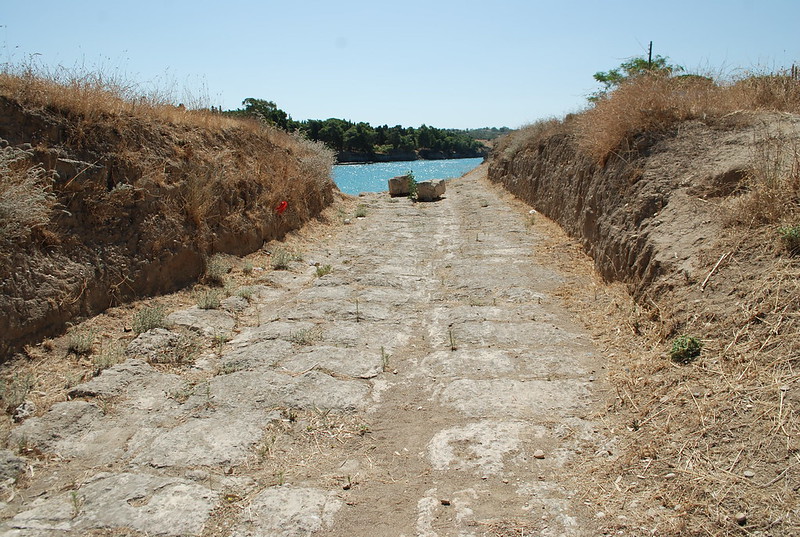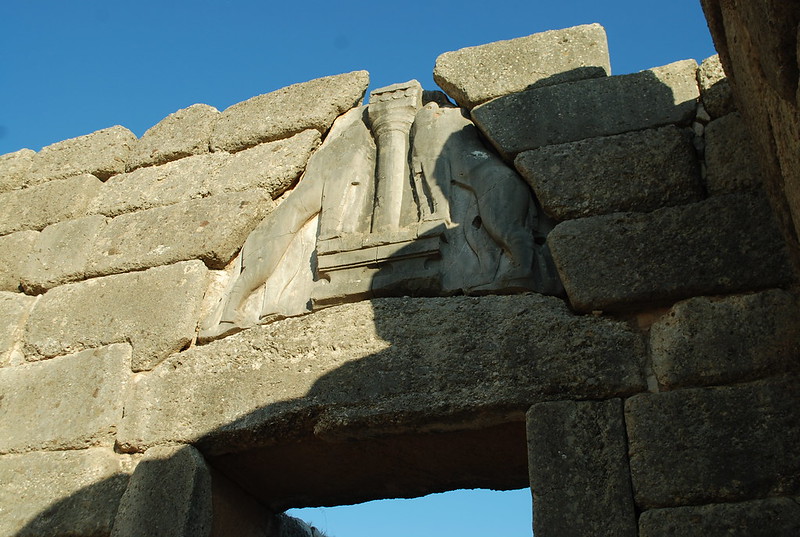Back, shower, in time to join the others who were at breakfast a few minutes earlier. The same as yesterday, except that D and E finish all the cheese and ham toasties, and I have one too.
I do a final wander through the village and photograph: its picturesque, and the back alleys are convoluted: the new road is now the main artery, but in there are lots of hard-to-piece-together lanes that were presumably once important. Finding the church(es) is quite hard; and I do what M and I managed yesterday, which is to spend 10 mins getting to the church, only to disover a back stair leading down directly to the hotel. I'm still not sure how that works.
We manage to leave by just-past-nine which is quite good going for us, and head North. More mountain roads which I enjoy driving on at ~40 km/h, for perhaps half an hour before we come over the far side onto bigger roads. Some gorgeous stretches of roadside flowers: hollyhocks, those curious yellow spiky things; blues. Then onto the motorway: brutal but efficient; small tolls. After a while it seems to me that we really ought to rearrange our plans: we're going to get to Mycenae at about 11, and climbing up to the citadel in the heat of the middle of the day just doesn't make sense (since we're on schedule I really should have thought of this yesterday: had I done so, we could have stopped for coffee and cards in Dimitsana or one the way in the interior). So, change plans, and decide to drive straight to our new hotel in Loutrakis, which we've almost booked, just a few k north of Corinth.
We go through the outskirts of Corinth, which is something of a dump, then see the Sea! Stop at the mouth of the Corinth canal, to look at the traces of the tow-road which existed since antiquity. There's not much left - maybe 20 m of old stone with grooves scored into it - and looking now its hard to imagine the effort of dragging a ship over, on rollers or trolleys or whatever. D and E not much interested. There's a new bridge - probably a swing-bridge - over the canal, and up in the distance, where the banks grow much higher, an arced bridge. I want to go and gaze at the deep cut at some point.

And so, up the strip, to our hotel. Its a bit mixed, but our hotel looks nice - quite narrow, but goes back a long way in a sequence of courtyards with a pool at the back. Its windy by the sea - I keep forgetting that - blowing onto the shore. The children collapse in their room, and M and I come out to the first courtyard where we can see the sea and its whitecaps, and I write this, after first getting through the overthrow of the four hundreed and the Athenian loss of Euboea and the near collapse of their empire; and once again the importance of enterprise in war. And then the machinations with the Persians, which T only realised was important in book VIII, and then suddenly the book is over, the Athenians spared final defeat by T's death.
Lunch: to the taverna next door, which is quite basic, run by locals, and serves us decent food. E goes for simple sphagetti, I for aubergine salad and dolmades (the latter somewhat disappointing; wet rather than oily), whereas D and M go look at the guys icebox, where he shows them the fish available. D chooses a "dorada" perhaps a snapper, and M grilled sardines. And I have Mythos Greek bier. And it goes well. We're about the only customers though; in fact the front is pretty quiet around lunchtime. Its quite windy - not sure if this is the daily sea breeze or if its an atypical blow.
After: siesta, and some time by the pool: E swims, with M, then M out and I am inveigled in, and enjoy self with E.
Now its roundabout 5, and M and I start thinking about heading off to Mycenae, having allowed the children to convince us they really don't want to go to see a pile of old stones. That's a bit sad; I'd like to think they would like to see and experience this stuff; but they lack context. So we go alone, together. Getting back through Korinthos is a bit hit-n-miss (oh yes, and at some point we cross over the canal at what looks like its deepest point, so we stop and marvel, briefly; definitely something to show the children) but we hit the motorway and then it works, until we turn off, signed, and follow roads and hope, and it turns out to work. There's a little town nearby, souvenirs and hotels and stuff, but we don't stop. Pass the "tomb of Atreus" and 500 m on we're at the end. Just a little walk past the gate (8 euro each for adults) and a gentle slope up to the citadel. Its hot, though. The path leads straight to the Lion Gate as the first thing you see, and its as impressive in reality as I could have hoped for from the pictures: massive, solid, present, ancient. What more can I say? Look at the pictures; imagine it for yourself. The walls it is embedded in are indeed "Cyclopean" - composed of huge blocks. No-one builds that way since or now, probably because it just doesn't make much sense.

After that most of the rest of the citadel is less exciting, unless you're an archeologue: the usual kind of here's-the-foundations-of-some-thing-that-we-guess-is-a-palace and so on. "Grave Circle A" is better, because more complete and with more structure. The "back gate", the not-Lion gate, is fairly massive though smaller. We notice there that the lintel block has been carefully cut to allow a recess for the door, which looks like a lot of work. The guide notes that the over-lintel block isn't a load-shedding triangle, but it is two stones blocks arranged, again, to shed the load off the lintel.
From the top of the citadel - and indeed, from the road here, enough that we got slightly confused about which was which - you can see the hill of the citadel of Argos in the distance, rising above its plain. It looks so old in the haze of distance and slanting light of evening, yet is young compared to Mycenae.
M goes to the museum, whilst I spend another 10-15 minutes looking at and photographing the gate. Its more than three thousand years old. I can't possibly imagine what the people who built it thought.
The museum is quite decent, says M, and while we're here we'll just nip down to the "tomb of Atreus" or whatever they call this. Cunningly, this is arranged so you walk towards it then turn a right angle so you see it properly, and then wow! Its enormous, the entranceway and the door. Inside is another wow, because the space is much bigger and higher than you expect, stone "beehive" construction (see, they still hadn't invented the arch). Above the door lintel is yet another way of shedding the load, in that there's a triangular gap in the stonework.
And so back to the hotel, where D needs to be woken to go out for a meal at the same taverna.
No comments:
Post a Comment